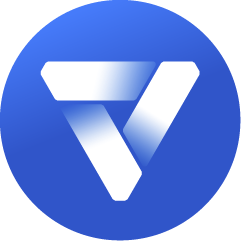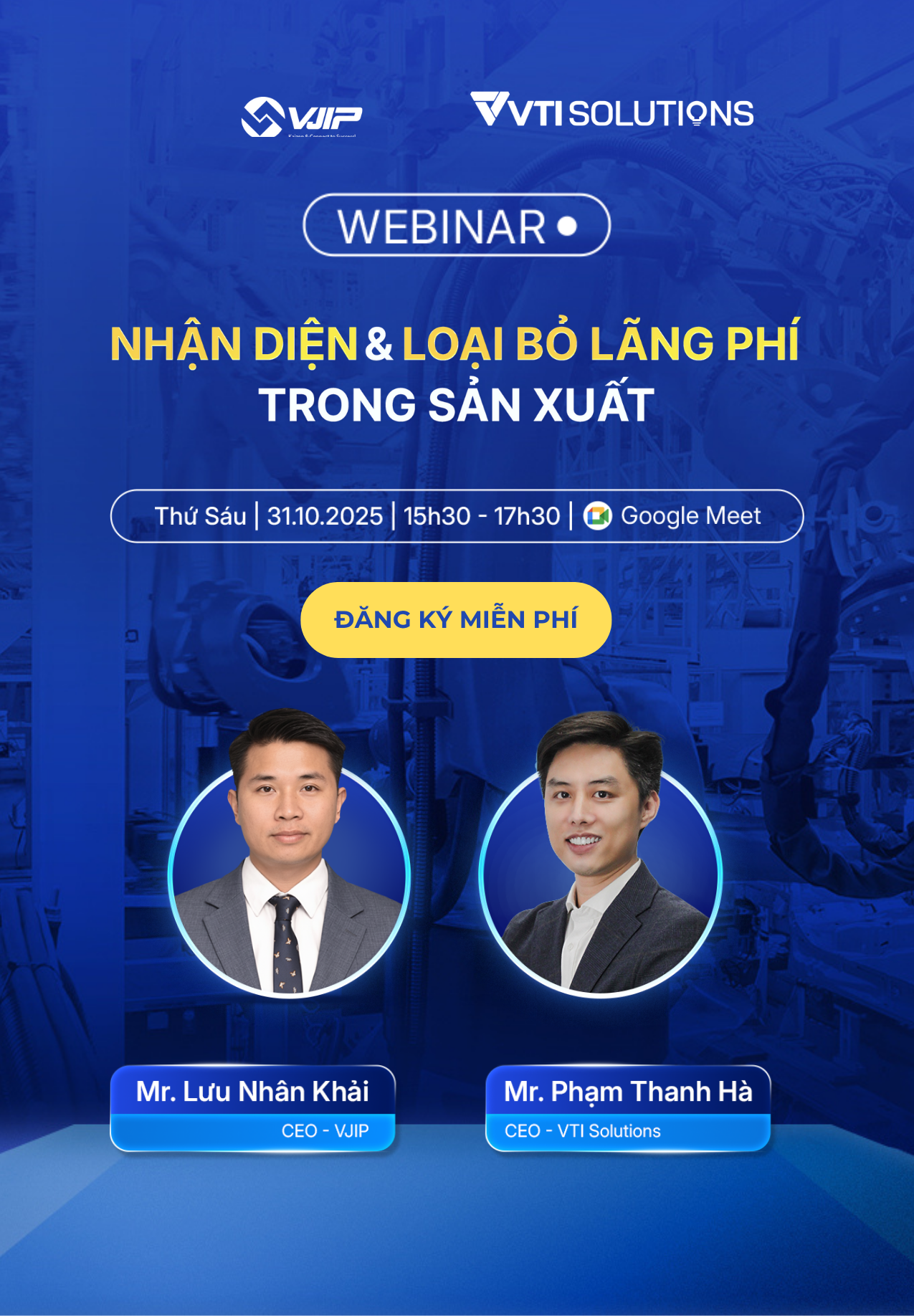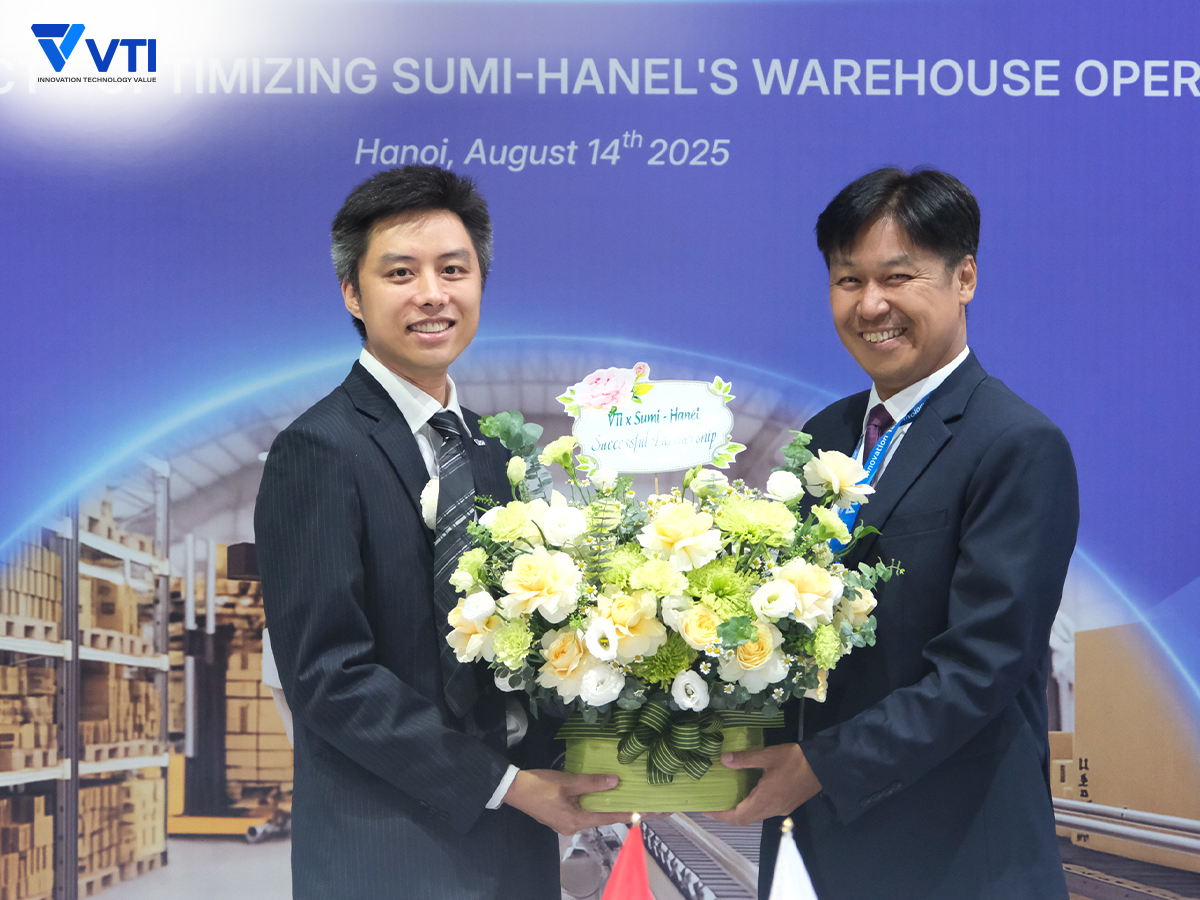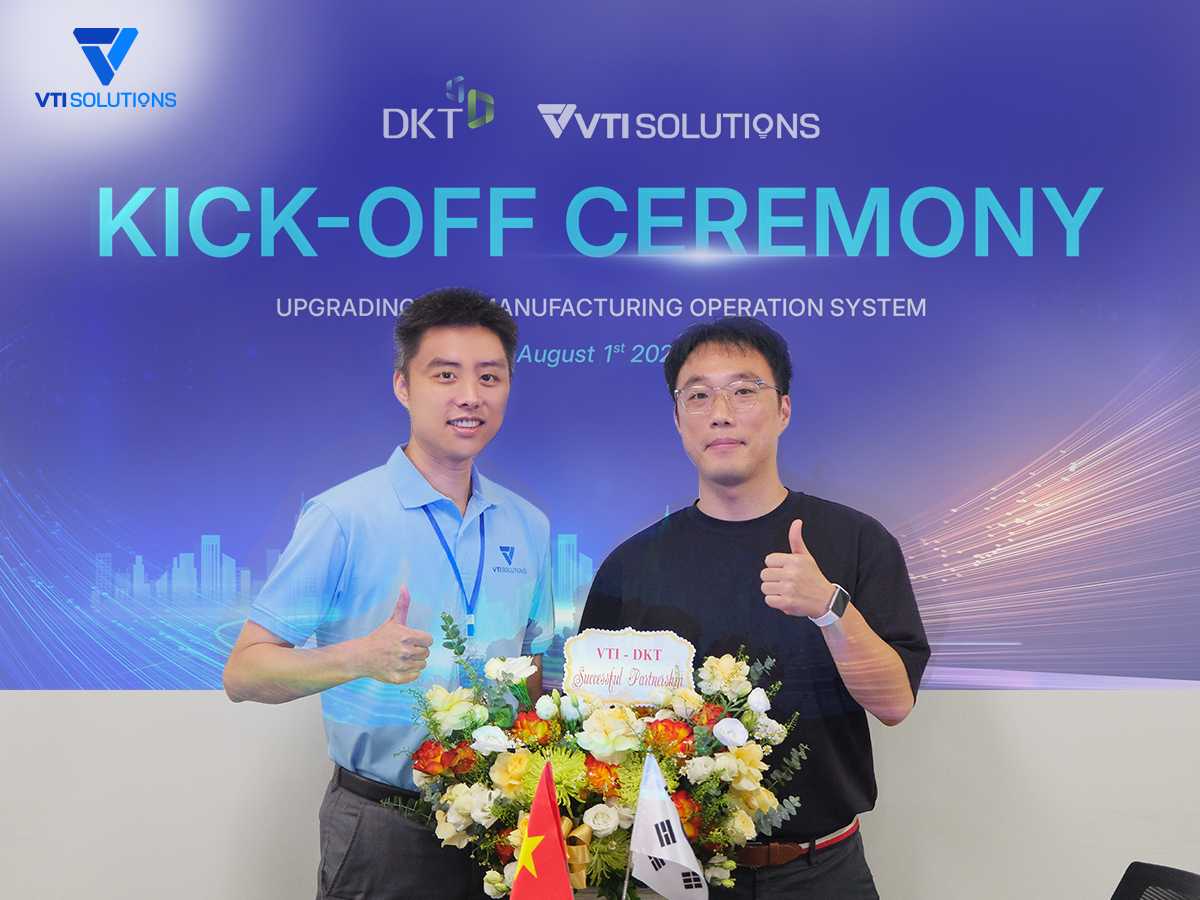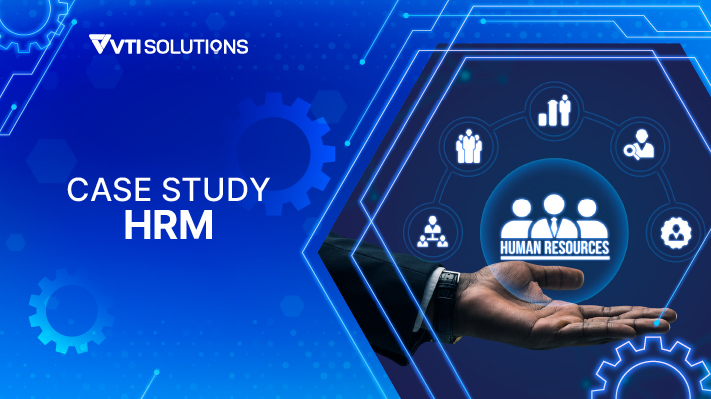Human resource management in a large-scale manufacturing environment has always been a challenging problem: complex shifts, dispersed data, cumbersome procedures, and high security requirements. In the context where digital transformation is becoming an inevitable trend, VTI Solutions will analyze a typical case of how a manufacturing enterprise successfully implemented an integrated HRM system to thoroughly resolve these issues, from automating timekeeping and payroll calculation to standardizing operational processes and internal communication.
1. Context
According to a survey by Vietnam Insider, 2025 marks a breakthrough year for the manufacturing industry in Vietnam and Southeast Asia. The sector has made significant contributions to economic growth and is expected to become a global manufacturing hub, driven by technological adoption and new infrastructure development.

However, alongside this rapid growth, large-scale manufacturing enterprises are facing major challenges in workforce management, reducing operational efficiency, like: complex shift scheduling, error-prone time attendance and payroll processes, and outdated manual workflows. In this current context, many businesses are beginning to accelerate internal digital transformation efforts.
One prominent example of this digital transformation wave is a large-scale printing equipment manufacturing plant in Vietnam, where traditional methods can no longer effectively address complex workforce management challenges.
The client is a multinational manufacturing company (100% Japanese-owned), established in 2011. With over 6,000 employees working at a 100,000 m² factory, the company manages a diverse range of labor groups.
However, they have been relying on disparate, stand-alone software systems that lack integration, are difficult to customize, and are not scalable. Additionally, storing employee records manually in formats like PDF, Word, and Excel has hindered centralized and synchronized management. These limitations have led to several workforce management and operational issues, including:
Complicated Timekeeping and Shift Management
- Multiple working shifts (morning, afternoon, night), both rotating and fixed;
- Challenges of integrating with facial recognition attendance management tools.
- Difficulties in tracking real-time updates for overtime, leave requests, and holiday schedules.
Complex and Error-Prone Payroll Calculations
- Salaries are calculated based on various dynamic indicators (overtime, bonuses, penalties, KPIs), making manual processing prone to mistakes.
- Accurate payroll requires seamless data integration across multiple departments.
Lengthy and Manual Approval Processes
- Approval workflows for leave requests, OT, or late arrivals involve multiple hierarchical levels. However, these processes are still largely paper-based, leading to delays in response time.
Manual Employee Evaluations
- Surveys, performance reports, and evaluations are handled individually by managers, which is time-consuming and lacks standardization, making it difficult to consolidate data.
Inefficient Internal Communication
- Information is mostly shared via in-person meetings, SMS, printed bulletin boards, or internal emails.
- Lack of integration in communication channels leads to missed or misunderstood announcements.
High Security Requirements with Data Accessibility Needs
- The system must operate within a closed internal LAN, yet restrict external access. However, it still needs to enable seamless data flow across departments to maintain operational continuity.
Manual Canteen Management and Meal Tracking
- Forecasting, meal distribution, and reporting are still done manually, which results in waste, inefficiencies, and difficulties in resource allocation.
Consequences: These shortcomings reduce productivity, increase the risk of errors, and cause the HR department to spend excessive time on administrative tasks instead of focusing on strategic workforce development.
2. Requirement
To address the problem, the primary requirement of the project is to develop an HRM software system that thoroughly resolves existing issues, fully covers HR operations, and offers high flexibility and scalability. The solution must meet the following objectives:
- Efficiently manage a large workforce;
- Integrate with facial recognition time attendance machines to automatically track overtime, leave, and late arrivals/early departures in real time;
- Automate payroll processing and employee performance evaluations;
- Standardize approval workflows and eliminate manual paperwork;
- Enhance internal communication to be centralized, timely, and accessible across multiple platforms;
- Ensure high-level data security while maintaining seamless system connectivity;
- Optimize meal management to reduce waste and improve coordination.
3. Software Solutions from VTI Solutions
After conducting a thorough survey and carefully considering the complex requirements based on the company’s unique characteristics, VTI Solutions proposed an HRM system that is both stable, flexible and fully integrated.
Accordingly, the solution was decided to be built on the Odoo 15 platform – a well-known open-source system renowned for its flexibility and high customizability.
The system is designed with two main components: a Web HRM (computer-based management) and a Mobile App (phone application), ensuring that all employees, from managers to workers, can easily use it across multiple platforms.

3.1 Human Resource Management System Configuration Diagram
The entire system is hosted within an internal LAN (NHRM), ensuring security by blocking Internet access. Employee data is centrally stored in a MySQL 8 database. However, periodic backups and remote recovery via AWS Site-to-Site are implemented as needed. This guarantees system availability and safety in all situations.
Additionally, an Access Control Server is used to provide flexible role-based permissions for various roles: HR staff, department managers, senior management, and employees.
It is crucial that the system can interact with devices such as facial recognition time attendance machines (e.g., Hikvision), internal LDAP/DNS services (e.g., Active Directory), and Web/Mobile application platforms through a Load Balancer to ensure high performance and system stability.

This architecture ensures that the system maintains internal security while being flexible enough for expansion, upgrades, or data recovery when needed.
3.2 Major Functions of HRM Web
3.2.1 Comprehensive User Data and Employee Profile Management
Centralised Storage and Management of Employee Profile:
All employee information (personal profiles, contracts, insurance details, etc.) is centrally stored within the system, and access is granted based on user roles. In addition, features such as contract and payslip management by period, along with automated reminders for important deadlines, make it easier for HR to search, cross-check, monitor, and generate reports efficiently.
Modules Seamless Integration:
To ensure comprehensive HR management with consistent and unified information, all data is synchronized across modules such as time attendance, payroll, performance evaluation, leave management, insurance, and more.
Labor Contracts Management:
The HR management software supports a wide range of contract types and is closely linked to salary agreements. It enables tracking of the entire contract lifecycle — from probation to termination — and includes automated expiration alerts.
Notably, both employees and managers can sign forms and contracts directly within the system or upload scanned signatures, streamlining the approval process and significantly reducing administrative time and costs.
Employee Performance Evaluation Management:
The system automatically consolidates multi-level, multi-degree evaluations (including input from direct managers, peers, self-assessments, and HR) conducted either on a scheduled cycle or at the end of a contract. The stored evaluation data serves as a critical reference for future decisions regarding salary adjustments, bonuses, and promotions.
3.2.2 Automated, Fast, and Accurate Payroll and Benefits Management
Work Shift Management:
The software supports flexible shift scheduling based on employees and positions. When a shift begins, quick notifications are sent through the website and mobile app. Especially, the data is updated instantly in sync with the time attendance system, ensuring workers’ rights and the accuracy in management.
Time Attendance Management:
The HRM system automatically records late arrivals, early departures, and leave based on data from the time attendance devices and work schedules. However, users can easily adjust and update attendance information through import/export features. Additionally, the system allows data aggregation at any time with flexible filtering and analysis capabilities.
Leave and Time-Off Management:
Employees and managers can submit and approve leave requests anytime, anywhere via web or mobile devices. The number of leave days is then automatically deducted and synchronized with the attendance and payroll records.
Besides, the system also supports configuring multiple approval levels based on organizational charts or production workshops, ensuring a transparent and efficient approval process.
Insurance Management:
The HR department can monitor social insurance, health insurance, and unemployment insurance with contribution rates automatically updated based on leave, salary, and new regulations. Simultaneously, the entire history of changes is stored, facilitating easy reconciliation with relevant parties.
Overtime (OT) Management:
With the automated OT approval feature following a transparent workflow, the system enhances payroll accuracy and enables better cost control by department. Additionally, it is configured to issue alerts when overtime limits exceed legal regulations.
Salary Management:
Thanks to the integration between modules, the system can automatically calculate salaries based on attendance, OT, leave, KPIs, benefits, and allowances. Moreover, depending on the contract type or department with strict role-based permissions, the calculation formulas can still be flexibly customized.
3.2.3 Efficient and Optimized Cafeteria Management
Beyond HR management features, VTI Solutions has developed an additional module to control cafeteria costs and operations.
Flexible Meal Registration: Employees can proactively register their personal meals and guest meals by work shift via web or mobile.
Forecasting and Optimization: The system forecasts meal demand based on registrations, helping optimize resources and reduce food waste.
Category and Quota Management: Supports managing various meal types (office, international, guest, etc.) with customizable prices and quotas.
Comprehensive Reporting: Generates reports by employee, comparing expected versus actual quantities to enable effective management.
3.2.4 Communication Management
The final feature of the HR management system enhances the quality of internal communication within the company.
- Quick post publishing: HR and leadership can post announcements directly, categorized by topics such as urgent notices, corporate culture, rewards, events, and health & safety.
- Instant Notifications: Push notifications are sent via mobile devices, ensuring employees receive timely information even when away from the workplace.
This ensures that each employee group receives relevant content, preventing missed messages or information overload. Employees can also access their communication history anytime.
3.3 Major Functions of Mobile App
In addition to the comprehensive web HRM system for management, VTI Solutions also provides a user-friendly mobile application for employees.

The mobile application allows employees to perform essential tasks anytime, anywhere. From timekeeping and applying for leave to tracking salary and bonuses, it creates a flexible and modern work experience:
- Register Late Arrival/Early Departure: Submit requests with transparent approval workflows, directly linked to official timekeeping.
- Contract Management: View contracts, receive expiration notifications, trigger renewal reviews, and store historical data.
- Apply for Leave: Submit leave requests with automatic approval, update leave balances, and connect to timekeeping-payroll.
- Timekeeping & Declaration: View personal timekeeping data by day/month, submit adjustment requests for errors.
- Check Salary & Bonuses: Receive detailed payslips showing income, expenses, and deductions, with historical storage by period.
- Register for Benefit Policy: Register for preferential benefits, Social Insurance, and Health Insurance on mobile, connected to timekeeping-payroll-insurance.
- Employee Handbook: Access a handbook containing guidelines, policies, and regulations, with keyword search functionality.
- Meal Registration: Register for meals by shift/day/week, view menus with time limits, and automatically send logistics requests.
- Notifications – Communication: Receive instant push notifications about urgent announcements, corporate culture, commendations, and events.
4. Conclusion
By implementing an HRM system based on Odoo (VMS) with full modules from timekeeping and payroll calculation to contract management and internal communication, the enterprise has addressed the root of core issues, Increased Efficiency & Time Savings. This has enabled the enterprise to:
- Comprehensive Automation: Eliminate paperwork, reduce manual errors, and save processing time for HR.
- Accurate Timekeeping & Payroll Calculation: Real-time data from facial recognition timekeeping machines, dynamic payroll automatic calculation.
- Standardized Approval Process: Transparent electronic processing of leave requests and overtime (OT), enhancing user experience.
- Effective Contract Management & Performance Evaluation: Expiration alerts, multi-dimensional evaluations, and timely support for salary and bonus decisions.
- Centralized Communication: Employees’ capability to grasp important information, increasing engagement, and accountability.
- Smart Canteen Management: Meal portion forecasting, reducing waste.
- High Security & Synchronization: Secured operation within the LAN, data synchronization between modules.
VTI Solutions is proud to be a provider of comprehensive HRM solutions, helping businesses optimize human resource management and operate efficiently.
The company not only implements modern systems but also customizes solutions to meet the specific needs of each enterprise, from real-time timekeeping management, automating leave and OT processes, payroll calculation, to data connectivity between departments.
Notably, the system applies advanced technologies such as FaceX, a facial recognition solution, and mobile push notifications, helping employees interact flexibly, minimize manual operations, and optimize the human resource management flow accurately and efficiently.

However, VTI Solutions clearly understands that there will never be a single isolated problem. After human resource management, many manufacturing enterprises continue to face an equally crucial challenge: efficient warehouse management in a continuous and rapidly changing production environment.
Understanding this, VTI Solutions has developed WMS-X – a comprehensive warehouse management solution that applies advanced technology to automate the entire inbound, outbound, and inventory processes, helping businesses not only reduce errors but also significantly enhance operational efficiency. If you are looking for a solution to this difficult problem, learn about WMS-X today!
Or contact hotline: 1900 6333 48 for direct support!

 VietNam
VietNam 日本語
日本語